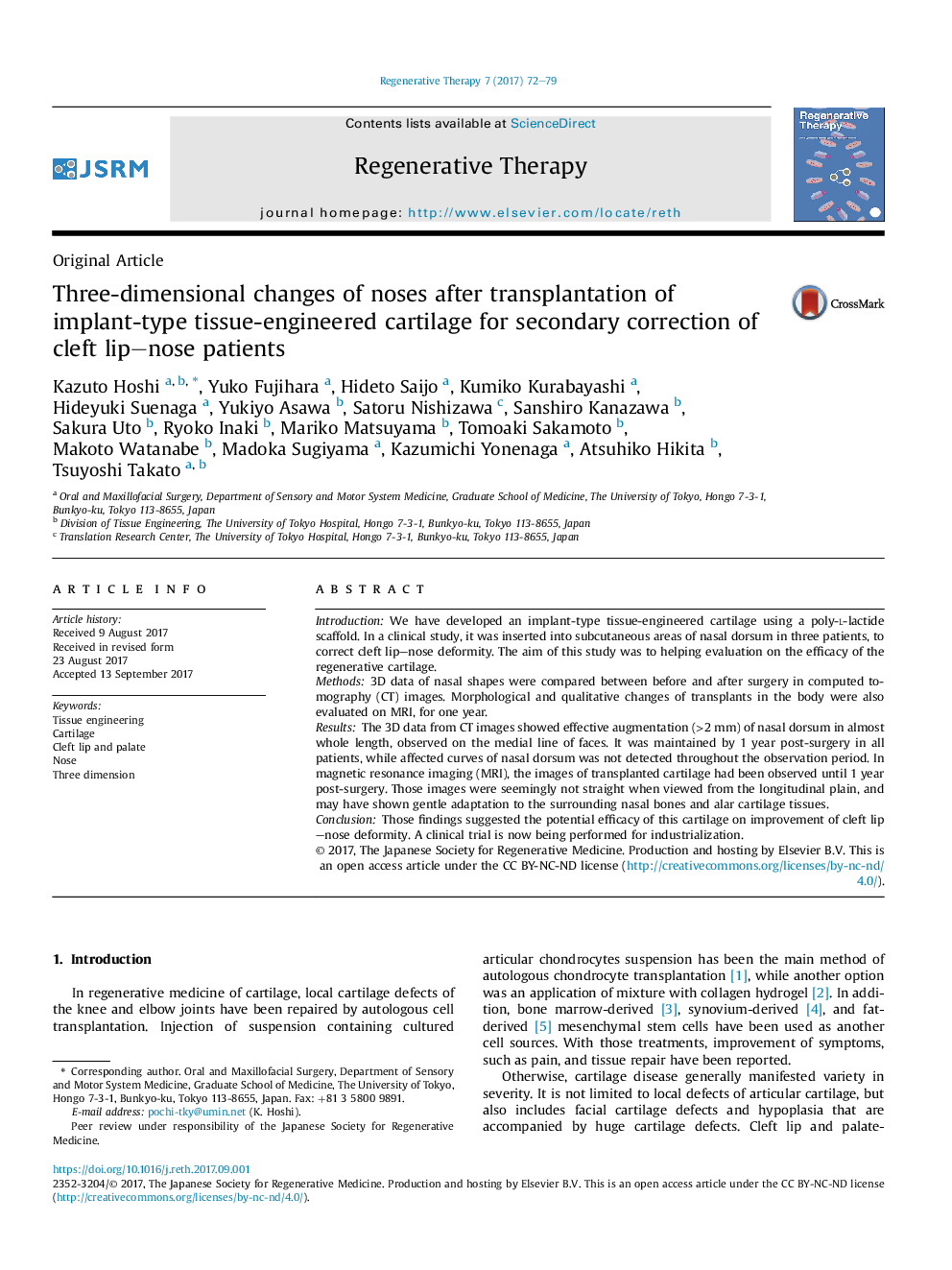| Article ID | Journal | Published Year | Pages | File Type |
|---|---|---|---|---|
| 5516189 | Regenerative Therapy | 2017 | 8 Pages |
â¢Cleft lip-nose deformity was corrected by tissue-engineered cartilage.â¢Effective augmentation was observed on the medial line of nasal dorsum for 1 year.â¢Images of transplanted cartilage had been detected by MRI until 1 year.
IntroductionWe have developed an implant-type tissue-engineered cartilage using a poly-l-lactide scaffold. In a clinical study, it was inserted into subcutaneous areas of nasal dorsum in three patients, to correct cleft lip-nose deformity. The aim of this study was to helping evaluation on the efficacy of the regenerative cartilage.Methods3D data of nasal shapes were compared between before and after surgery in computed tomography (CT) images. Morphological and qualitative changes of transplants in the body were also evaluated on MRI, for one year.ResultsThe 3D data from CT images showed effective augmentation (>2Â mm) of nasal dorsum in almost whole length, observed on the medial line of faces. It was maintained by 1 year post-surgery in all patients, while affected curves of nasal dorsum was not detected throughout the observation period. In magnetic resonance imaging (MRI), the images of transplanted cartilage had been observed until 1 year post-surgery. Those images were seemingly not straight when viewed from the longitudinal plain, and may have shown gentle adaptation to the surrounding nasal bones and alar cartilage tissues.ConclusionThose findings suggested the potential efficacy of this cartilage on improvement of cleft lip-nose deformity. A clinical trial is now being performed for industrialization.
